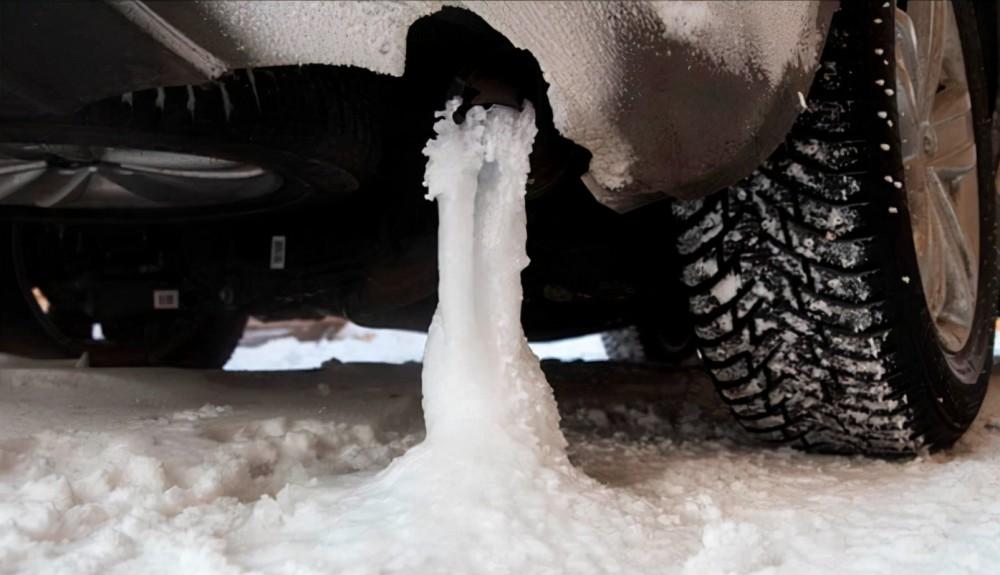In the movie "Chosin Lake", which was released some time ago, faced with the extreme low temperature of -38.9 ° C to -40 ° C, the volunteer soldiers fought with the enemy with difficulty. On the ambush position, the three companies of the volunteer army lurked for three days and three nights, and were frozen in formation, which was the ice sculpture company that could sing and cry. In the face of such extremely cold weather, not only can people not bear it, but all kinds of equipment using diesel engines must also undergo great tests.

This is because the diesel oil of the vehicle will tend to wax at a certain temperature, that is, the diesel will be more and more unable to flow in the engine and pipeline. In addition, the ignition method of the diesel engine is different from that of the gasoline engine, it relies on the piston to compress downwards, and the oil injected into the injector is pressed to the ignition point, in order to ignite, and the diesel with poor fluidity is still difficult to ensure the pressure ignition after the double supercharging of the high-pressure oil pump and the injector.
In the face of this situation, the industry has come up with a lot of solutions, the first is to change the low diesel, such as 5 # vehicle diesel can only be applied to the minimum temperature of more than 8 ° C, 0 # vehicle diesel for the minimum temperature must be above 4 ° C, -10 # vehicle diesel for the minimum temperature must be above -5 ° C, then replace them with -20 # vehicle diesel that can be applied to more than -14 °C, or can be applied to -35 # vehicle diesel above -29 °C, There is even an option to apply -50# vehicle diesel with a minimum temperature of -44°C or more.
In addition, vehicles and equipment can be equipped with fuel heating devices, auxiliary start-up, in-cylinder preheating or inlet air preheating, and the use of special coolants to ensure the normal operation of diesel engines. Previously, China has achieved a start-up test without an auxiliary device at minus 35 °C, and an auxiliary device start test at minus 43 °C. However, the auxiliary starter encounters extremely cold weather, such as facing a very low temperature of -45 °C, which is not enough to cope.
The 40kW diesel-electric high-density GV2 engine of Anhui Hangrui Aviation Power Equipment Co., Ltd. has recently successfully completed a low temperature cold start of -45 °C. It is worth noting that it successfully achieves a cold start without any external auxiliary start measures.
This method of low temperature cold start does internal work. Because the diesel engine needs to be pressurized, so its compression ratio is very high, the air tightness is also required to be high, and the clearance of all the parts is also quite small, but the temperature in winter is low, and the cylinder liner piston is affected by thermal expansion and contraction, so that the gap is too large, the cylinder pressure becomes lower, the piston movement resistance is greater, and the crankshaft is needed to reach a sufficient speed at this time, and the piston will press the fuel to the ignition point.
On the other hand, when it is extremely cold, it is because the battery capacity is insufficient at low temperature, and the battery capacity of the original car can be appropriately increased to match the high-speed motor. As for the starting engine power is too low, the engine starting speed is too low, can not effectively compress the fuel problem, the solution is simple and crude, that is, to increase the power, such as the aviation engine of Hangrui power, the power-to-weight ratio can be 1.0 to 1.2, that is, more than 100 kg of power system, the power can reach 100 to 120kW.
Of course, as a vehicle engine, the power-to-weight ratio of diesel-electric high-density power GV2 engine cannot pursue the extreme indicators of 1.0 to 1.2, but according to the parameters of 96.6kg and 60kW in the official announcement, the power-to-weight ratio of 0.6 is still a great improvement compared with the 0.3-0.4 of the existing traditional power in the industry.
At present, Hangrui Power's diesel-electric high-density power GV2 engine has a total of 40kW, 60kW, 100kW, 300kW, 600kW a total of five products in the matching overall application, with high power density, high speed, full electronic control, diesel / aviation coal are applicable characteristics, matching high-speed motors, to achieve diesel-electric integration, can efficiently support larger tonnage combat vehicles, unmanned vehicles long-range start, remote reconnaissance and long-range strike functions.
In the future, it is not excluded that continuous operations will be carried out under extremely low temperature conditions, and now is not the period of the Chosin Lake Campaign, there are more and more combat vehicles, unmanned vehicles and equipment with diesel engines, how to ensure the continuous normal use of equipment under -45 ° C, or even more extreme low temperature conditions? Technology has found the answer for us.